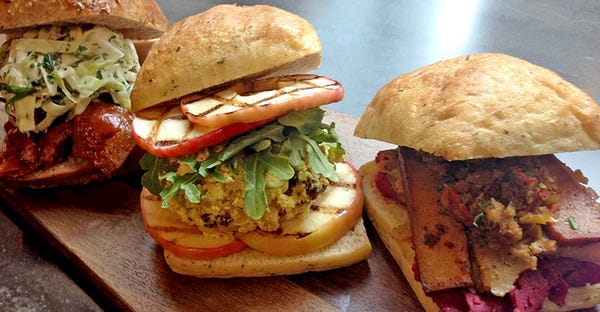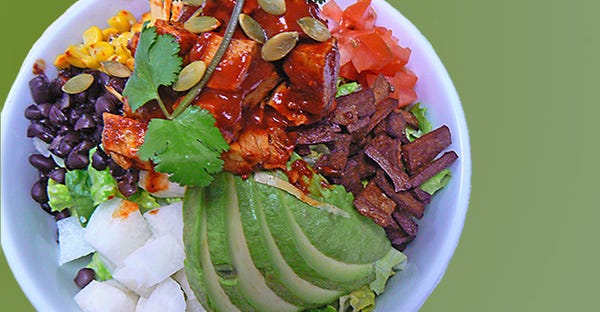April 3, 2020

In our last Well Prepared column, we talked about differentiation. There was a time when each retailer had an established identity, but the landscape has changed radically in the last few years and this is no longer the case.
Nowadays, there is a whole lot of sameness. Blame pricing, convenience, technology, online ordering or any number of factors, but the bottom line is there is now an amalgam personality of retail, and many of the solutions that used to establish differentiation no longer work.
So what is the trick to carving out your own identity? As we discussed last time, it’s having a solid prepared foods program. Even if it’s a limited concept, that’s OK, as you should plan to tackle only what you can handle. In fact, as long as it’s simple but flawless, having just one signature item is enough to differentiate your store and attract customers. Publix, for instance, is known for its sub sandwiches. Another retailer is known for its fresh seasonal pies—the only items that store makes in-house. Personally, I still return to a retail group I worked with for years, if only to get its incredible chicken salad sandwich.

Where to begin?
Choose a dish that you’re really passionate about. Think about the key components and complexity, remembering that not everything has to be prepared from scratch, and determine if you have the space to dedicate to it. It’s o bviously easier if you have a behind-the-scenes kitchen space to prepare food, but it’s often more effective to finish a dish in front of the customer.
bviously easier if you have a behind-the-scenes kitchen space to prepare food, but it’s often more effective to finish a dish in front of the customer.
Here’s an example: A few years ago, I helped out a large Midwestern grocer that had a traditional sliced-meat-and-cheese deli. This store had never had a professional chef on site but did have a little-used convection oven. The deli manager, an avid home cook, loves cedar-planked salmon, so we came up with a simple lemon-Dijon marinade, purchased precut fresh wild salmon and bought three-foot-long untreated cedar planks. I instructed him to line up the salmon on the cedar boards, brush it with the marinade, bake it in the oven and then display it on the planks.
This simple but impressive dish has been that deli’s No. 1-selling item for over two years now. They can tout the fact that it’s made in-house, and because it sits front and center in the deli case, many side dishes are sold to accompany it.
Now, with this no-frills framework in mind, here are a few tips to help bring your foodservice vision to life.
Tap the trends
Plant-centric may be an explosive trend right now, but many of us in the natural foods business have been serving globally inspired vegetarian cuisine for more than 20 years. Before there was chicken-less chicken or lab-created meatless burgers that bleed, there were loads of fresh, seasonal produce, along with grains, legumes and plant-based proteins like tofu, tempeh and seitan.
Don’t forget that you have all of these nutritious, delicious foods—and more—at hand, ready to be turned into stellar cuisine. So, whether you want to develop one signature plant-forward item or a few, think beyond bringing in premade meatless burgers that most others offer already. Push your store’s own produce, grains, legumes and alternative proteins instead. Health-promoting plant-based dishes can lend color, vibrance and a true point of differentiation. My advice: Don’t simply jump on the same burger bandwagon, be your own produce pusher.

Marketing basics
Hurry in before it’s too late. To further engage shoppers and move more prepared foods, create a sense of urgency. Limited-time offers work great in this way. Developing a calendar of time-sensitive specials can drum up excitement, drive sales spikes and attract new customers to your foodservice—so long as the offers are meaningful and priced right. This calendar will also give the store’s marketing department great content with which to generate buzz and sometimes even drive media attention, which reaches far beyond a simple sale.
Management 101
Can I help you? Executing prepared foods well requires a dedicated, thoroughly trained staff. However, we all know the massive labor shortage we face in today’s market, which can make it tough to keep solid employees. Everyone I speak with throughout the industry echoes this concern, and many stores are 20% short of the employees needed to run their businesses.
I don’t claim to have a clear solution, but I can say that unless we pay people a reasonable wage, our retail landscape will wither. Stores that offer higher wages employ and retain better staff—this is undeniable. It is also very effective to have a well-developed training program that is written to the employee base’s level so they can truly understand the duties of their roles. There are normally incentives attached. I have written these types of programs, and they’ve been very effective. If you train well and pay well, you should have an easier time of executing a successful foodservice.
Steven Petusevsky is the author of The Whole Foods Market Cookbook—a Guide to Natural Foods with 350 Recipes (Clarkson Potter, 2002). He served as the Whole Foods Market national director of creative food development for more than a decade and now works as a culinary resource for several companies.
About the Author
You May Also Like
.png?width=700&auto=webp&quality=80&disable=upscale)




